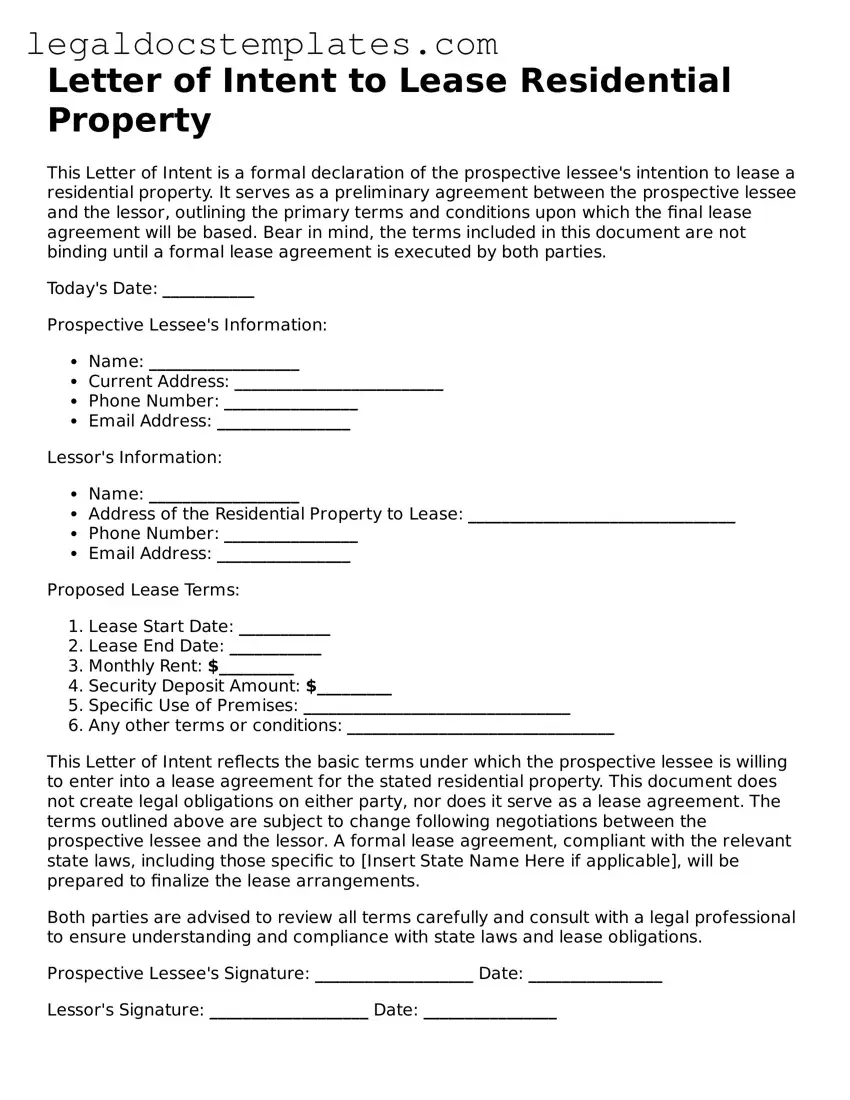The Letter of Intent to Lease Residential Property shares similarities with a Rental Application Form. Both serve as preliminary steps in the leasing process, where the Rental Application Form is typically the first document a prospective tenant completes to provide their personal and financial information to the landlord. This form allows landlords to screen potential tenants before moving forward with more binding agreements.
Similar to a Residential Lease Agreement, the Letter of Intent outlines the basic terms under which a tenant agrees to rent a property. However, the Residential Lease Agreement is a more detailed and binding contract that includes comprehensive terms and conditions of the rental arrangement, such as rent amount, security deposit details, and lease duration.
A Lease Renewal Agreement, much like the Letter of Intent to Lease, marks the continuation of interest in maintaining a rental relationship. While the Letter of Intent signifies the initial desire to lease a property, a Lease Renewal Agreement is used when a tenant wishes to extend their stay at a property under the terms of the existing or a new lease.
The Letter of Intent bears resemblance to a Real Estate Offer Letter, which is commonly used in buying scenarios. Both documents express a party's interest in entering into a formal agreement, whether for leasing or purchasing. A Real Estate Offer Letter, however, usually initiates the purchase process and includes price negotiations and initial terms of sale.
Similar to a Sublease Agreement, the Letter of Intent can signify an intent to occupy a leased residence. However, a Sublease Agreement is used when the original tenant of a lease wishes to rent out their leased premises to another tenant. It incorporates terms under which the sublease will occur, subject to the landlord's approval.
Co-signer Agreements share a common goal with the Letter of Intent in securing rental arrangements. A Co-signer Agreement is needed when a tenant’s financial background might not meet the landlord's requirements on their own. It introduces a third party to guarantee rent payment, while the Letter of Intent is the initial signal of a tenant's interest before such details are finalized.
The Property Management Agreement and the Letter of Intent both involve arrangements concerning residential property. While the Letter of Intent initiates the leasing process between a landlord and a potential tenant, a Property Management Agreement establishes the relationship between a property owner and the manager who oversees the daily operations of the property, including leasing.
Last but not least, the Eviction Notice, while fundamentally different in purpose, shares a connection with the process initiated by a Letter of Intent to Lease. While the Letter of Intent signifies the beginning of a tenant's interest in leasing property, an Eviction Notice may signal the end of such an agreement, being a legal document landlords use to initiate the process of removing a tenant from their property.
